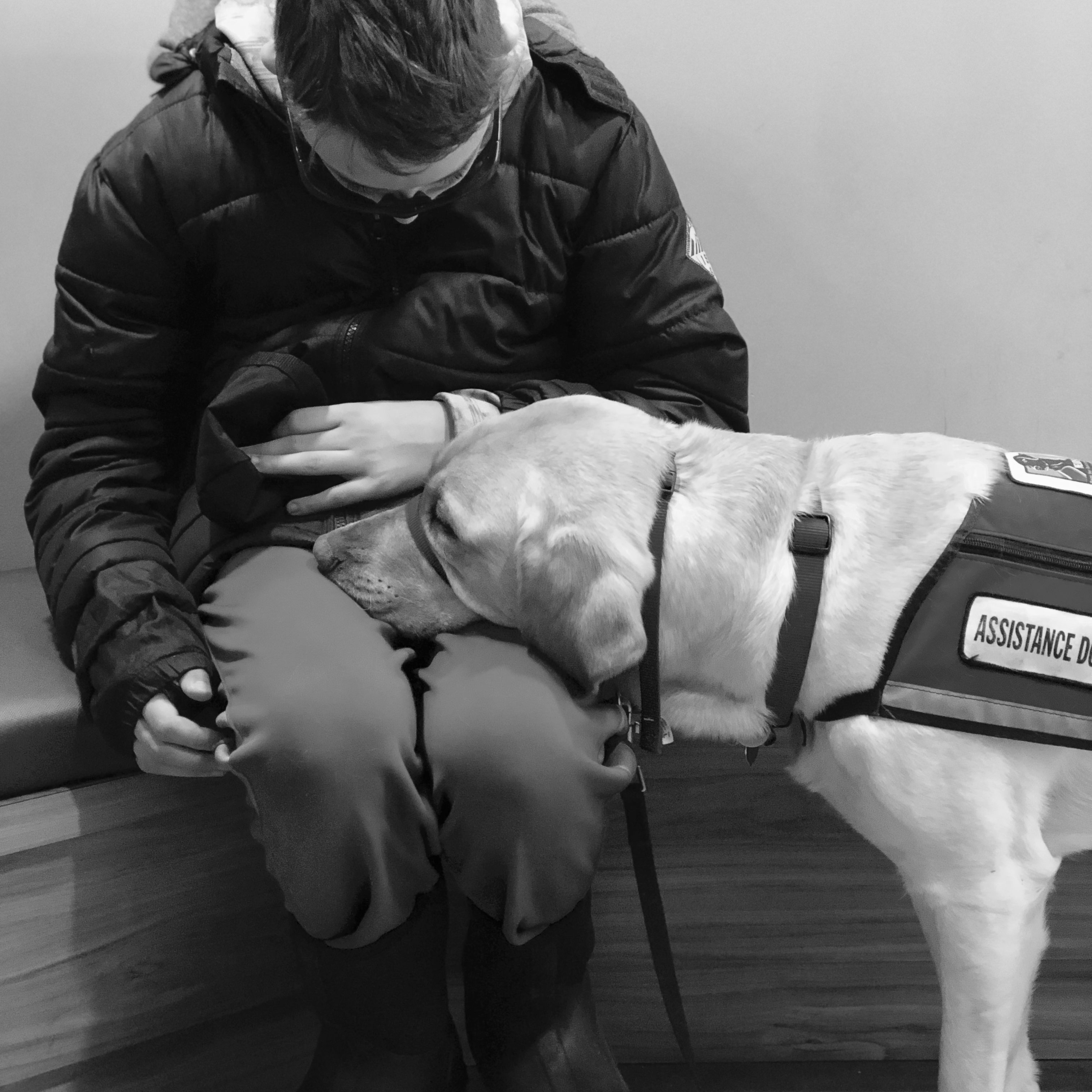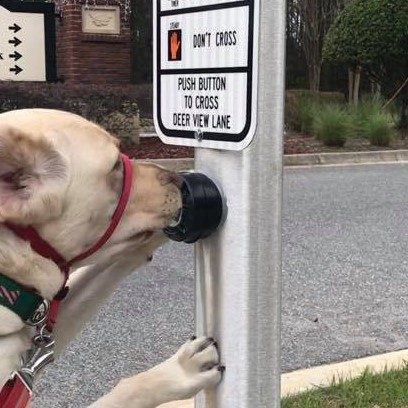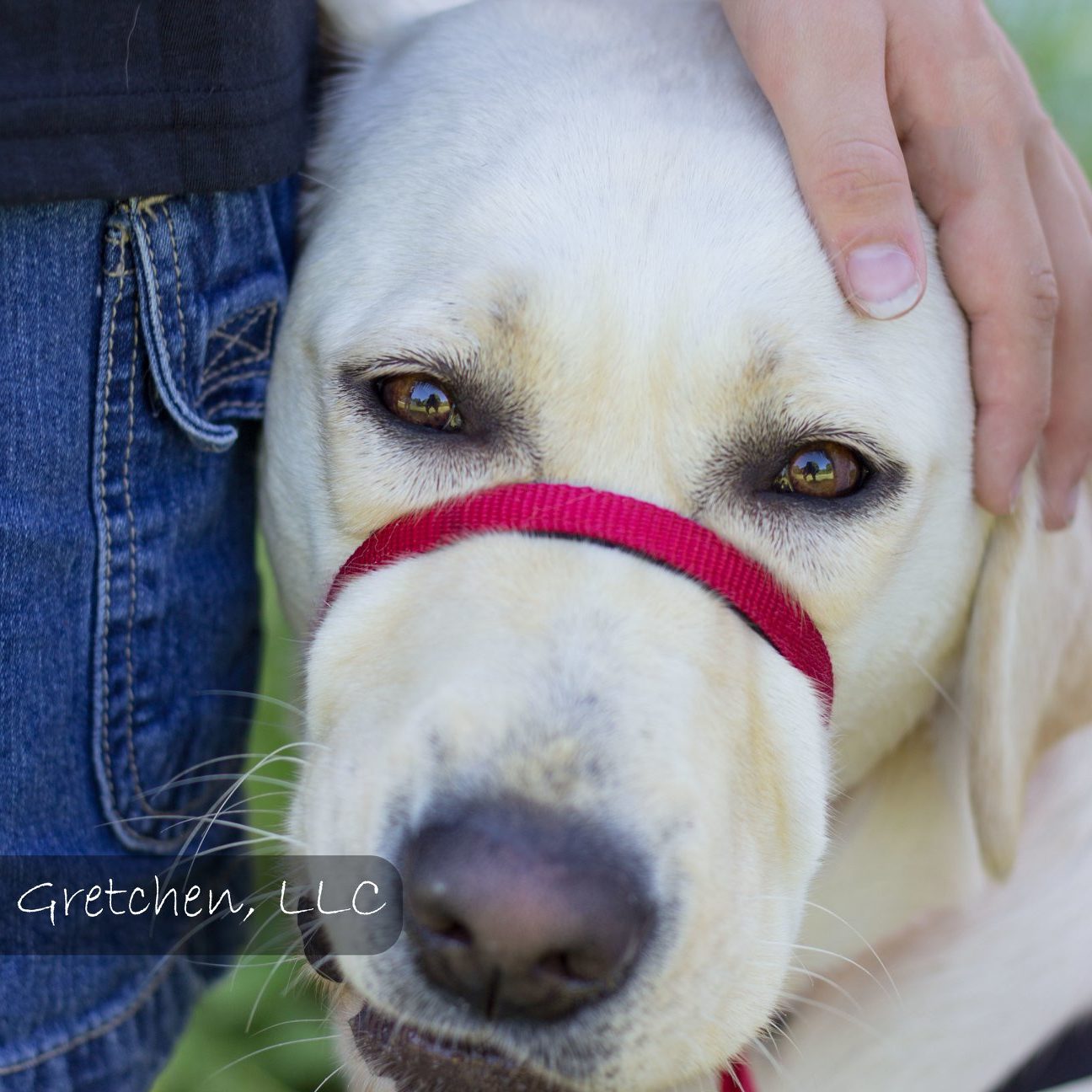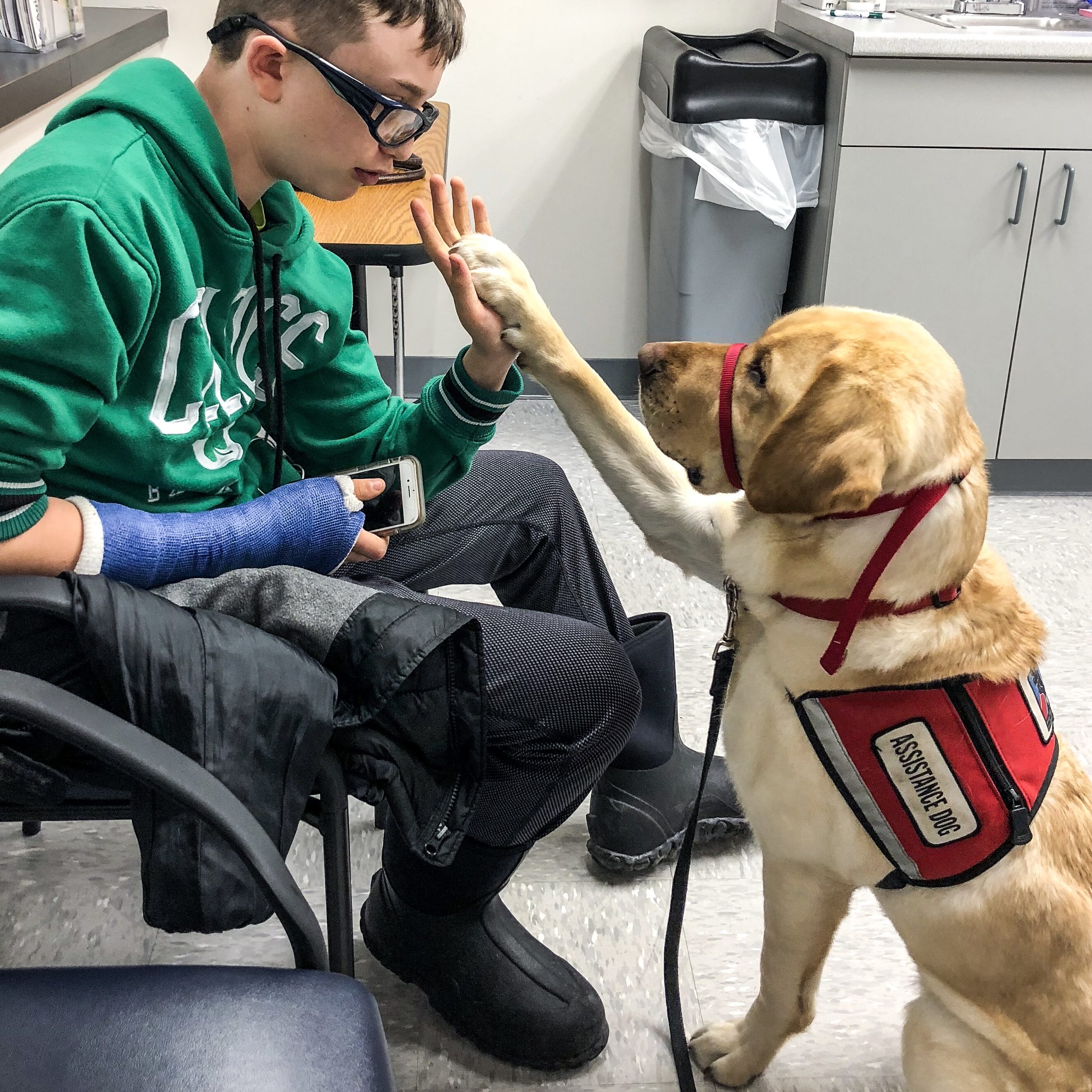How is a Service Dog different from a family pet?
A Service Dog is not a family pet. The presence of a family pet provides comfort, while a Service Dog provides specific task work to address the symptoms of autism or other developmental disabilities.
Here are some key differences:
One of the hallmarks of a well-trained Service Dog is that it consistently and reliably performs the tasks for which it’s been trained. For children with autism or other developmental disabilities, tasks can include:

Visit
The Service Dog will rest his head on the child’s lap. This can calm or interrupt an unwanted behavior.

Nudge
The Service Dog can flip on a light switch, mitigating a child’s fear of the dark.

My Lap
The Service Dog will put its front two paws onto the child’s legs. The My Lap command can be given while the child is seated in a chair, or the dog can come across sideways while they are on the floor, to give the sensation of pressure. The deep pressure can help with sensory integration.

Speak
The child can use this task to communicate with a parent. Because the Service Dog barks on command, the parent knows that when the dog barks, the child needs assistance.
Tasks and Commands – a Demonstration
Conversational skills – The Service Dog becomes the focal point for socialization and can facilitate conversation in any environment the child is with the dog, from the holiday dinner to shopping at the supermarket.When a well-trained Service Dog is present, people ask predictable questions that have answers a child can memorize. People may ask things like: “What is your dogs name?” “What is the dog’s breed?” “How old is your dog?” These questions are asked frequently and with repetition, so the child can learn rote answers, which can be a bridge to connecting with others. As the child grows more confident, conversations can take place through and about the dog.
Eye contact– A Service Dog is trained to make eye contact. When a child is comfortable looking into a dog’s eyes, this can translate into making eye contact with people.
Empathy & social cues – Parents can help their child learn to read body language and learn empathy for others by using the dog as a model. By learning to read the dog, the child can learn to read other people, their body language, facial expressions, and social cues.
Communications skills – The two-leash system, where a child and parent each hold a leash, allows the parent as facilitator to teach the child to talk to the dog to give it a command.
Fine motor skills -Taking on and off equipment (cape, gentle leader, leash), brushing the dogs teeth and brushing the dogs fur can help with a child’s dexterity
Gross motor skills -Daily exercising, throwing a ball, and playing games with the dog can help with a child’s gross motor development.
A Service Dog can help with…
Regulating emotions – Task work such as “visit” or “lap” provides a tactile way for the child to soothe him or herself.
Easing transitions – Transitions are often difficult to navigate for children with autism and other developmental disabilities. A Service Dog can serve as a focal point, for example, when the child first returns home from school or is anticipating a doctor’s visit.NEADS Service Dogs accompany their partner to doctors appointments, restaurants, sporting events, and other public places and help the child deal with these transitions. For some children, exercising their dog becomes a transitional tool that allows them to more easily move to the next activity.
Mitigating fears – Tasks can be used to help a child with his or her fears. For example, the task of turning on a light switch can be used if child has a fear of the dark.
Encourage self-care tasks – The Service Dog is a teaching tool. Assigning daily chores such as feeding, brushing and cleaning up after the dog can teach a child responsibility and routine. Assisting with this care can translate into an awareness of and interest in his or her own self-care.
Reduce resistance to going to the doctor and other appointments – Parents can use taking the dog to the vet as a model for the child’s visit to a doctor, therapist, dentist or other professional.
If you’ve met one person with autism, you’ve met one person with autism.
How do service dogs help with autism?
Social interactions are essential to cognitive and linguistic development. For children with ASD, normal interactions with others are difficult and they often withdraw into their own world, isolating themselves. A service dog acts as a social facilitator, a magnet to other children who will come and ask questions about the dog and want to pet the dog. The dog provides something to talk about and with these repeated positive interactions, the child learns to open up and get more comfortable talking with others.
A service dog could also:



How a service dog transformed daily life for a boy with autism
Autism is a neurological disability that affects the way the person thinks, processes sensory information and interacts with others. A service dog could help to cope with a difficult situation, dealing with transitions and facilitating social interactions. Getting out with a service dog can also reduce isolation, increase exercise and help with anxiety and depression that often occur in people with Autism Spectrum Disorder (ASD).
A dog can be a great companion to a person with ASD, providing love and attention, increasing activity, and reducing stress within a family. Dogs can be also be trained to interrupt repetitive behaviors or alert you when your child might be harming him/herself. They can provide deep pressure to help a person calm down, encourage a person to get out of bed, help with mobility or balance issues, pick up objects, respond to an alarm, etc. They can facilitate social interactions and relationships and expand the child’s ability to communicate with others.
Not every person with ASD will benefit from a service dog. If the person is afraid or uninterested in dogs, for instance, a service dog would not be a good fit. When the person is drawn to animals and naturally seeks comfort and interaction with animals, a service dog could make a significant difference in that person’s life.
A recent study from the University of Montreal confirmed that specifically trained service dogs can help reduce the anxiety and enhance the socialization skills of children with Autism Syndrome Disorders (ASD). The dogs had a dramatic impact on the children’s stress hormone levels.